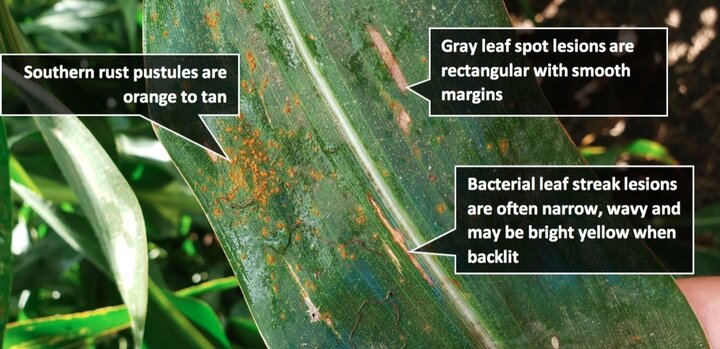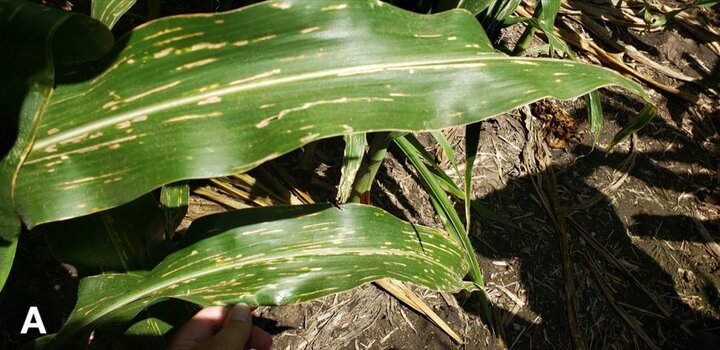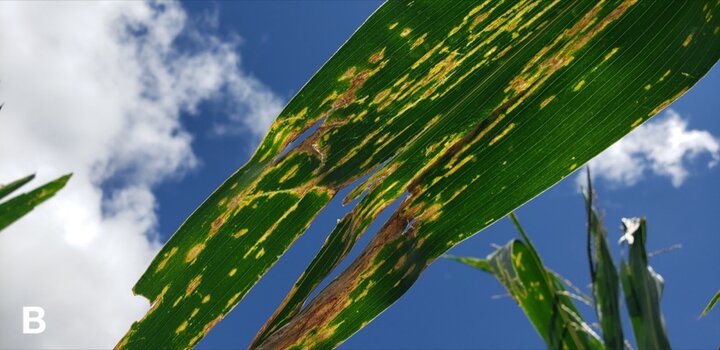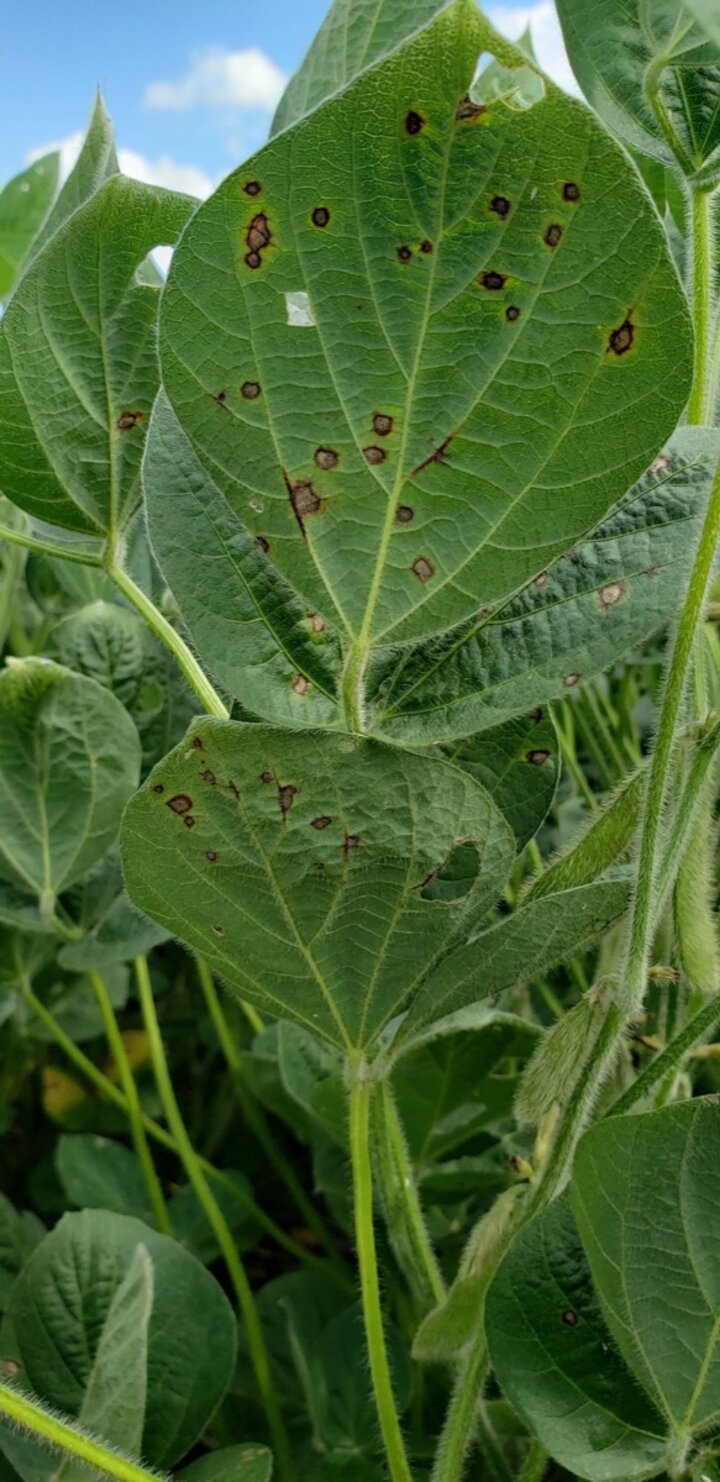Key Points:
- Southern rust is worsening in some areas and continuing to spread.
- Scouting is strongly recommended.
- Fields in northern Nebraska counties should also be scouted for southern rust.
- Fungicide applications may be beneficial for some corn fields, especially with widespread southern rust, where disease incidence is high and the crop has not matured beyond early dough stage.
- Frogeye leaf spot is developing in soybean fields around the state.
Southern Rust Spreading

Southern rust continues to spread across eastern Nebraska. To date, southern rust has been reported in 45 Nebraska counties (Figure 1). You can follow the southern rust tracking website to view where southern rust has been confirmed. Remember that counties highlighted in red indicate that a sample from at least one corn field was confirmed with southern rust, so it doesn’t indicate that all fields are affected. Similarly, counties not shaded are not necessarily free of the disease. Use this site as a guide where and when to scout more intensively for the disease.
In southern counties the disease is becoming more widespread and severe in some fields. During the last week southern rust has been confirmed in several northern Nebraska counties where we don’t normally have southern rust development during grain fill stages. It is important for producers, agronomists and others to continue to scout for southern rust immediately and repeatedly, especially in fields that are in grain fill stages and have southern rust nearby. Southern rust is caused by an aggressive fungal pathogen that can infect and reproduce quickly. In susceptible corn hybrids, damage can be severe causing substantial yield loss due to loss of leaf area that may also lead to reduced standability later. Scouting to identify where the disease has developed and is spreading will help to make informed decisions about whether or not a fungicide application may be needed to minimize damage that can be caused by the disease. Warm temperatures, especially around 80 F and moist conditions favor southern rust development and spread.
Look for patches of tightly clustered small orange to tan pustules, mainly on the upper leaf surface (Figure 2). Spores should rub off on your fingers and can be anywhere in the canopy, especially starting in the lower canopy where humidity may be highest.

Gray Leaf Spot
Gray leaf spot has also begun to move up the plants and is increasing in severity in many areas. Disease history, cropping practices (such as continuous corn), hybrid ratings, and weather conditions (especially warm and high relative humidity) impact this disease. Foliar fungicides can manage the disease and resistant hybrids. Look for rectangular lesions (Figure 2) that began in the lower leaves and progress higher up the plants. Because symptom development can be slow (14-21 days to develop lesions), keep in mind that infection may have already occurred 1-2 leaves above the highest leaf with visible lesions.
Bacterial Leaf Streak
Bacterial leaf streak has been confirmed across most of Nebraska and is more severe now than in several years. On some hybrids, lesions may appear similar to and be confused with those of the fungal disease, gray leaf spot (described above). Bacterial leaf streak lesions are often tan and between the leaf veins but often have wavy, irregular margins (Figure 2). Lesions may appear bright yellow when backlit. Foliar fungicides will not control the bacteria causing the disease. Some hybrids have severe bacterial leaf streak that has reached the upper leaves on corn plants (Figures 3a and 3b).


Soybean Disease
Frogeye Leaf Spot
Frogeye leaf spot has begun to develop and spread in some fields. Be sure to look for small gray to tan lesions with dark margins in upper soybean leaves (Figure 4). Foliar fungicides can effectively control the disease when applied at R3-R5, but resistance has been confirmed in some Nebraska locations to the QoI Group 11 (formerly called strobilurin) fungicides. We will continue to monitor frogeye development and test for fungicide resistance and its distribution in Nebraska. If a fungicide application is needed for frogeye leaf spot, consider products that are a mixture of active ingredients representing multiple fungicide classes for best results.
Sample Submission
Submit samples in plastic bags to the UNL Plant and Pest Diagnostic Clinic (PPDC) for help identifying these and other diseases if you are unsure of the diagnosis. Information on how to submit a sample and the sample submission form are available on the PPDC site.
Additional Resources
- Southern Rust (Crop Protection Network resource)
- Rust Diseases of Corn in Nebraska (Nebraska Extension NebGuide 1680)
- Fungicide Efficacy for Control of Corn Diseases (Crop Protection Network resource)
- Fungicide Efficacy for Control of Soybean Diseases (Crop Protection Network resource)
- Plant Disease Management Section of the 2020 Guide for Weed, Disease and Insect Management in Nebraska

